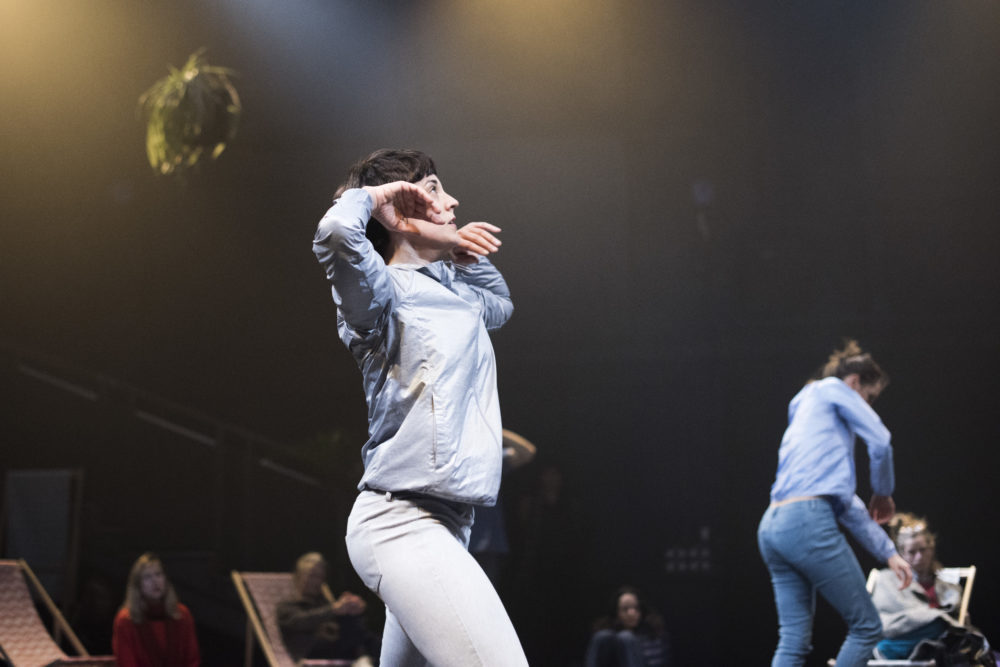The essence of Ellipsis Land is the relationship between space, body and technology. Starting from this connection, Pepa Ubera and Josefina Camus examine how the body adapts when directly engaged with the virtual world, embracing an expanded reality where brain and senses are in connection with the technology.
An immersive real-time performance that aims to create a choreographic experience where the audience’s sensation and perception of the surrounding space is amplified by the use of different elements – technology, movement and sound – blended to create a work that is a powerful synthesis of experimental dance and enchanting visual tricks.
In order to fully understand Ellipsis Land, it is essential to first consider the important relationship between dancers and musician, as the entire work develops around this connection. London-based composer Simone Salvatici plays live a sensational ambient score of processed sounds and low-frequency tunes to create an ethereal-like atmosphere that aims to evoke unseen connections between real and virtual.
As we enter the studio, we are invited to seat on the cushions on stage and feel free to move them anywhere. Pepa and Josefina are lying on the floor, face down, while their back is projected on a giant smartphone screen in the backdrop. They slowly engage in a continuous flow of trembling and convulsive movements reproduced in a live video in front of us, giving the idea of two bodies floating on a vertical space. Gestures that seem awkward and clumsy on the floor become light and graceful on the screen – a clever gimmick that multiplies their bodies and plays with our perception of the space.

When the screen switches off, Pepa and Josefina start to interact with each other in a sequence of repeated phrases; crawling, falling and clashing, connecting and disconnecting, trying to create patterns through the use of lights and gestures, in a kind of chemistry that involves the idea of geometrical shapes. They are now completely absorbed by the music; every vibration is intensified and reflected in their body movements.
In the last part, the audience is transported into a multisensory and multidimensional journey. The environment is surrounded by thick fog and darkness; the two dancers interact with the space around them, swaying beam of lights and illuminating parts of the studio at intervals to deliver the idea of a moving architecture. It is an immersive experience that activates all senses and widens our perception of space and reality.
Reviewed at Lilian Baylis Studio at Sadler’s Wells on 2nd November by Francesca Marotto


